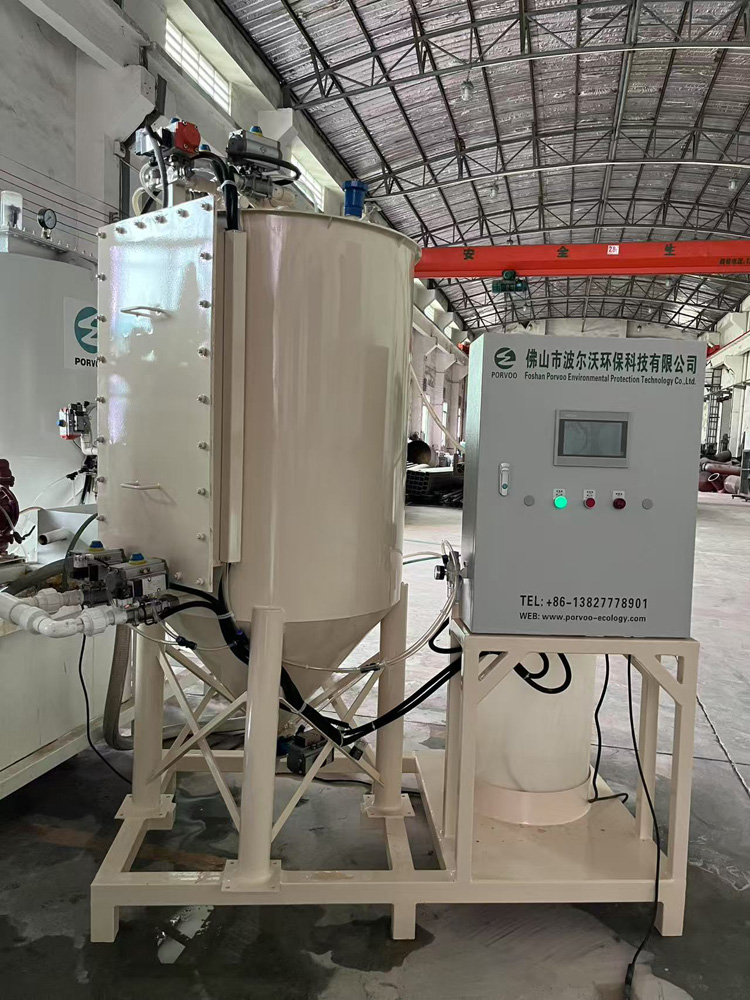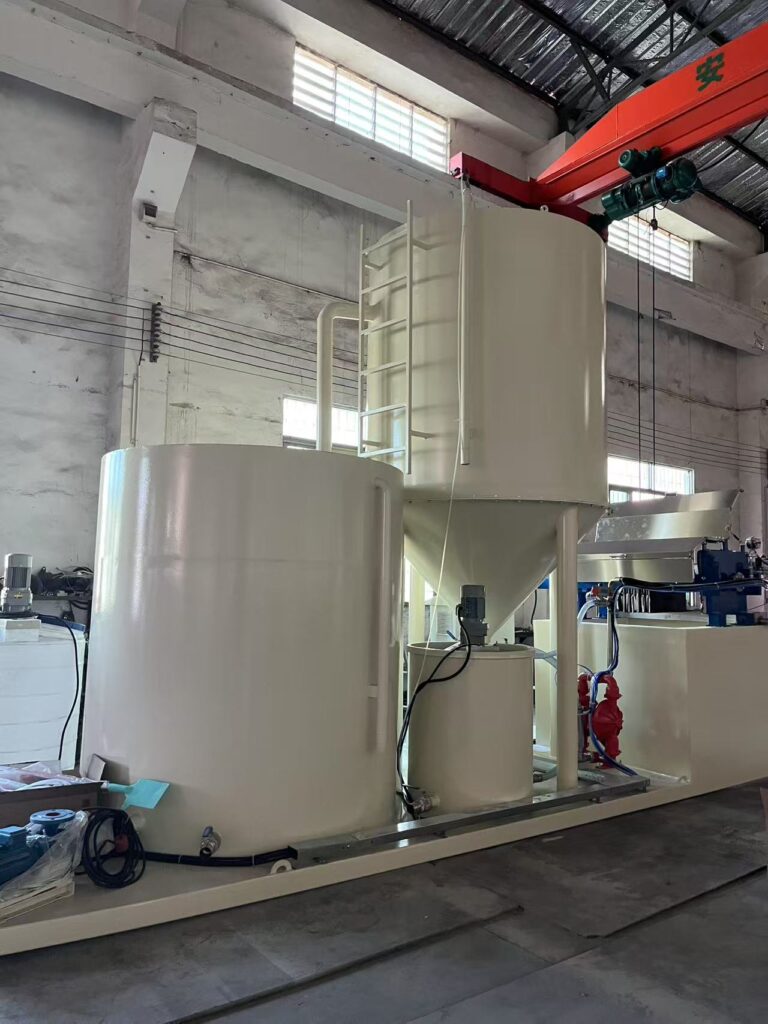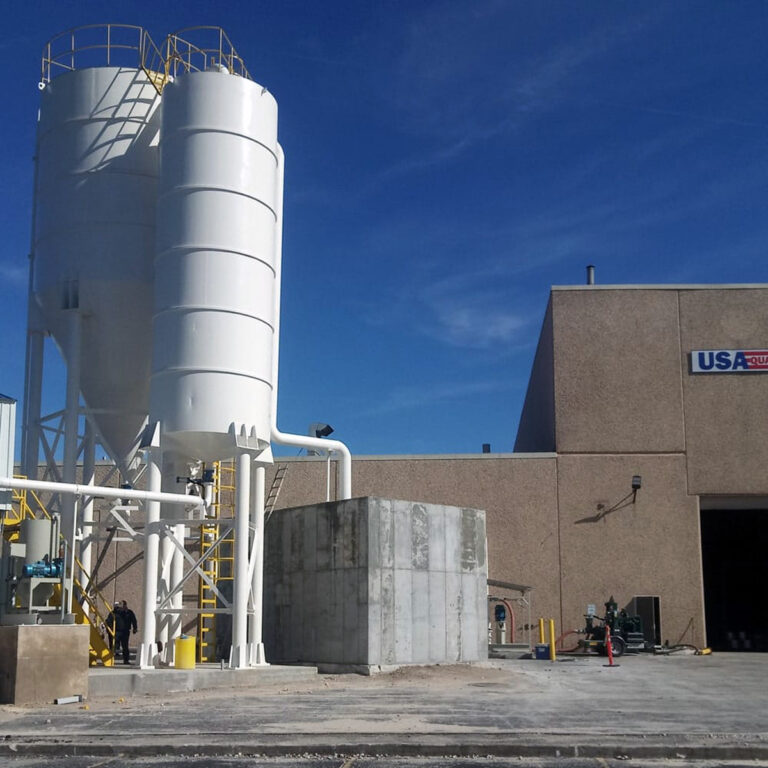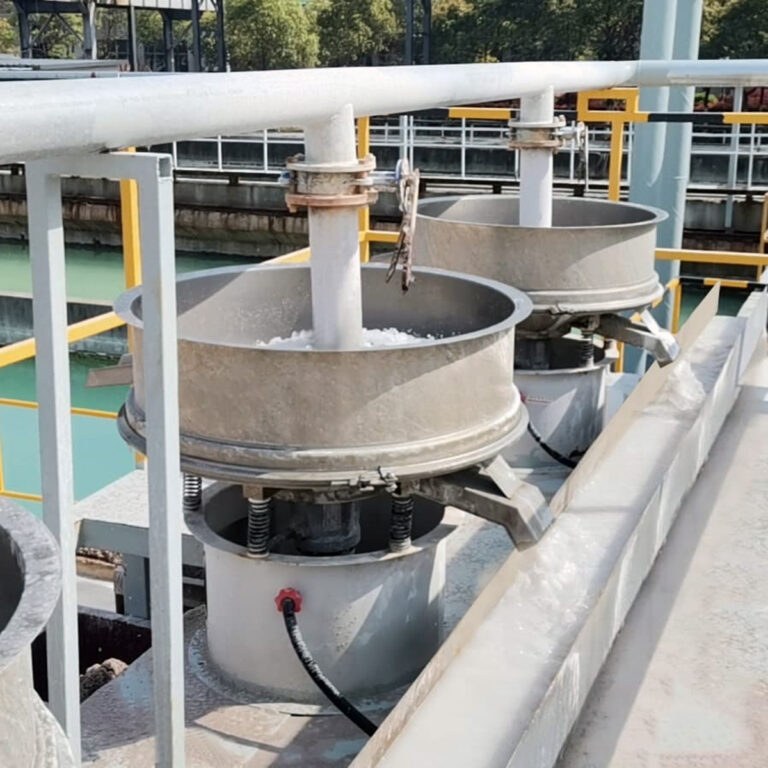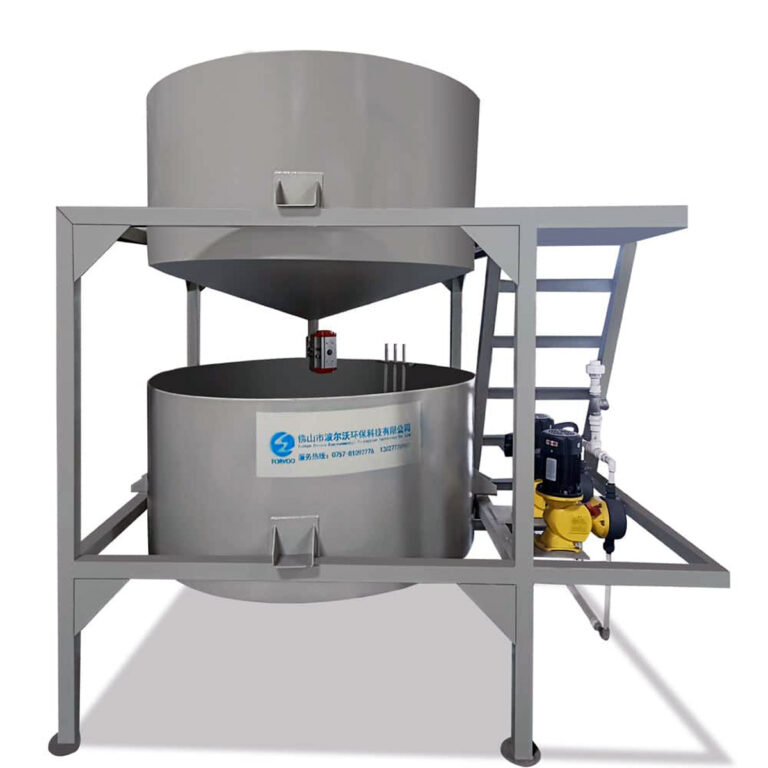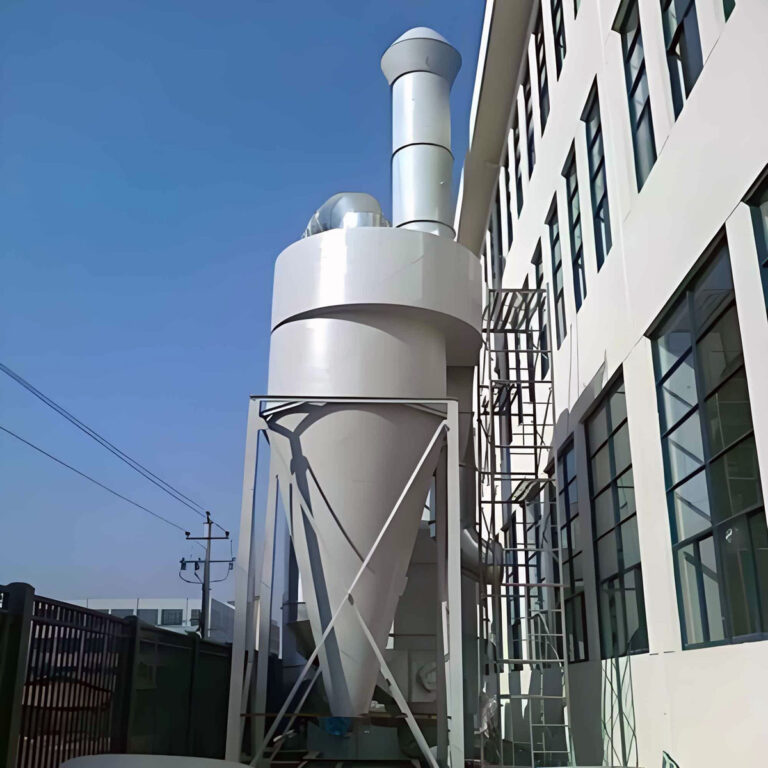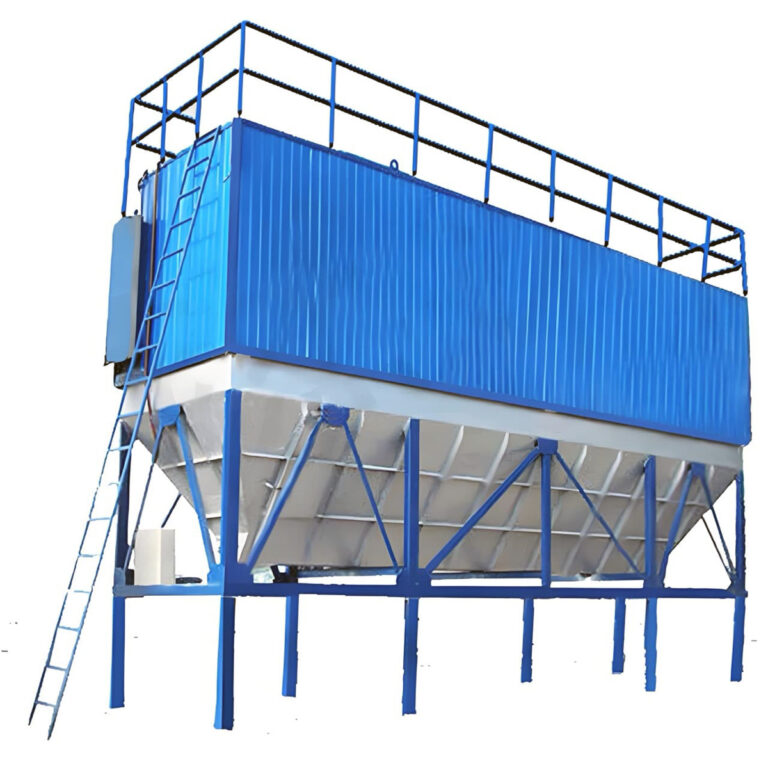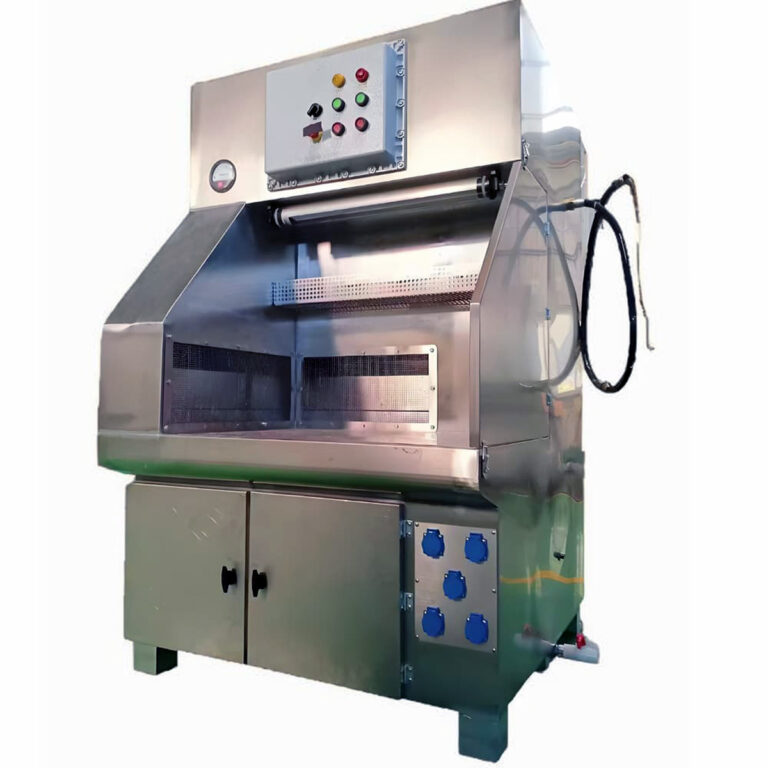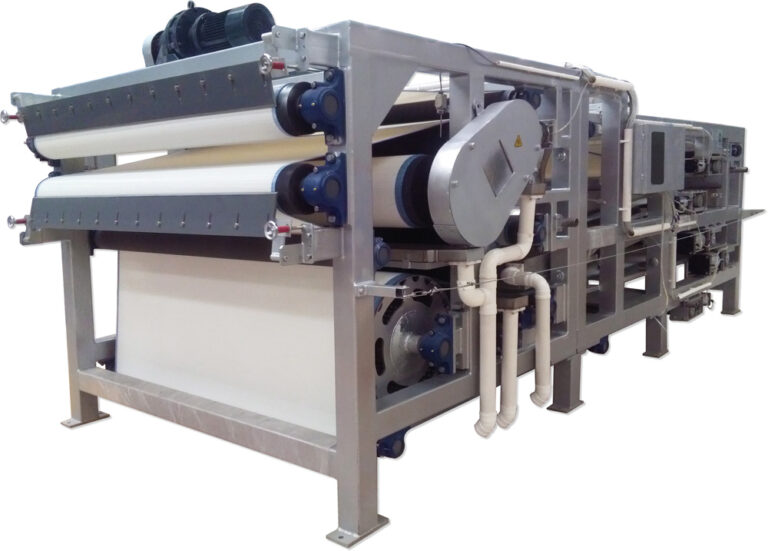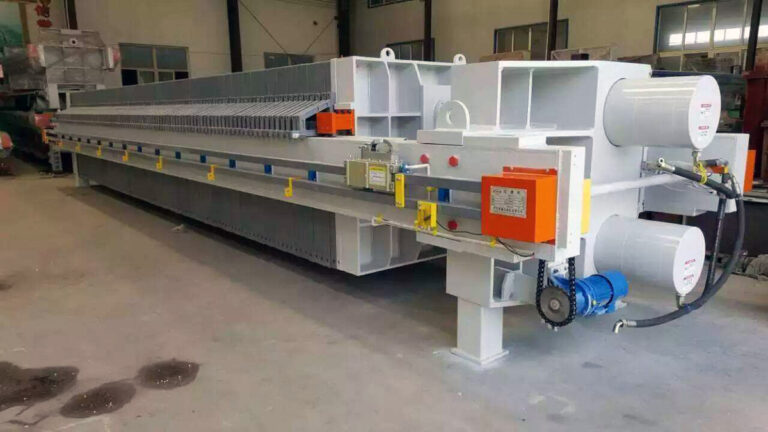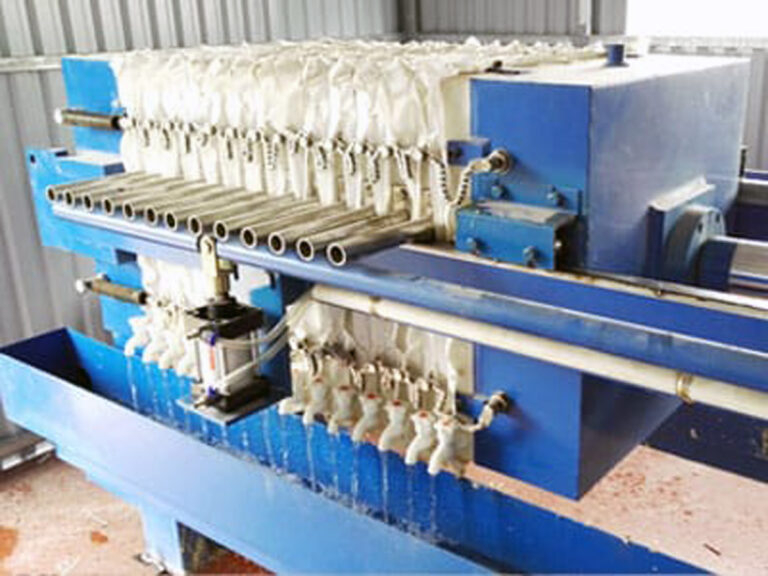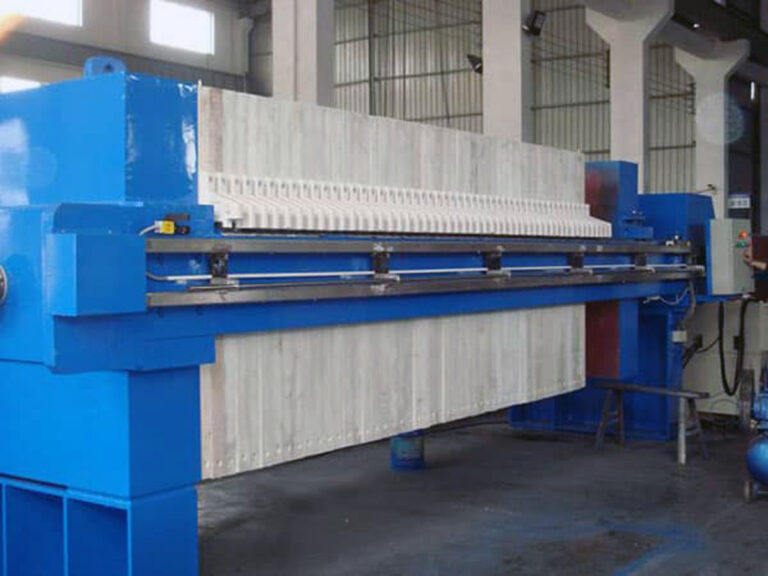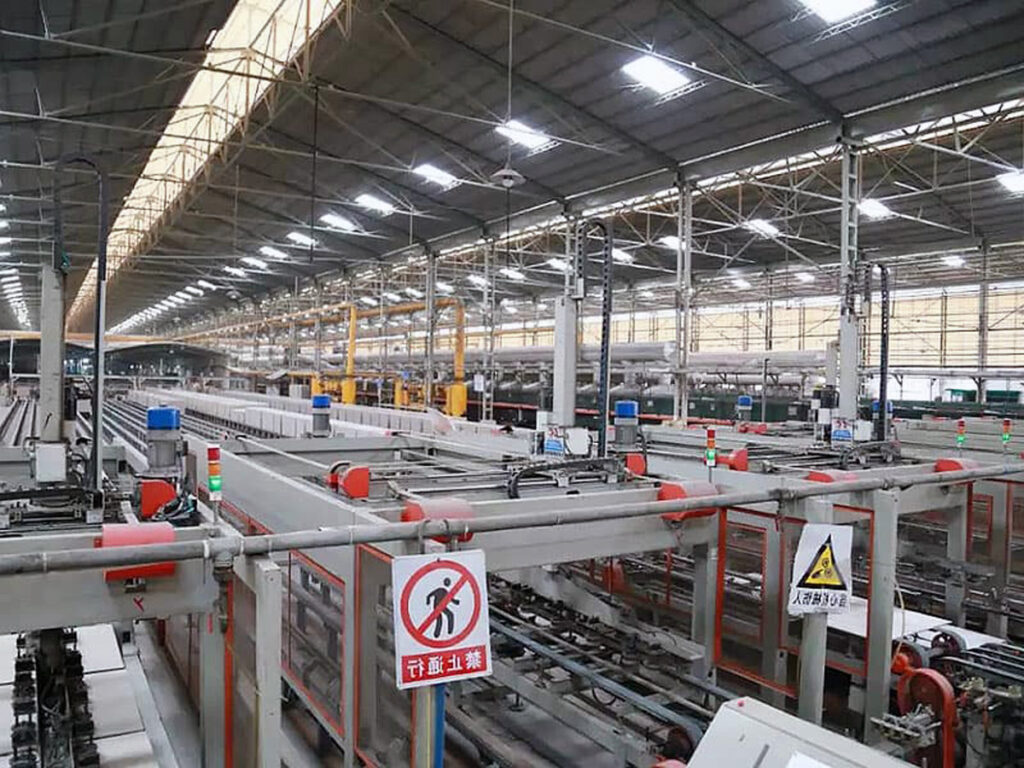When planning your industrial filtration project, understanding the true filter press cost becomes crucial for making informed investment decisions. Many facility managers and engineers discover that equipment pricing extends far beyond the initial purchase price, encompassing installation, operation, and long-term maintenance expenses that can significantly impact your bottom line.
The complexity of filter press pricing often catches buyers off-guard. While a basic unit might seem affordable, the total investment including auxiliary equipment, installation, and ongoing operational costs can easily double or triple your initial budget estimates. This comprehensive analysis addresses these financial challenges by providing detailed cost breakdowns, hidden expense identification, and strategic planning insights.
You’ll discover proven methodologies for calculating total cost of ownership, avoiding common budgeting pitfalls, and optimizing your PORVOO filtration investment. Whether you’re evaluating membrane systems, plate-and-frame configurations, or automated solutions, this guide delivers the financial intelligence needed to make cost-effective decisions that serve your operation for years to come.
What Factors Influence Filter Press Cost?
Understanding the primary cost drivers helps you make informed decisions when evaluating industrial filter press price options. Equipment pricing varies dramatically based on construction materials, automation levels, and capacity requirements specific to your application.
Equipment Size and Capacity Considerations
Filter press capacity directly correlates with equipment cost, but the relationship isn’t always linear. A 470mm plate system typically costs 40-60% less than comparable 1000mm units, yet may require longer cycle times that impact overall operational efficiency.
Processing volume requirements determine plate count, which significantly affects pricing. Systems handling 50-100 cubic meters per hour demand 20-40 plates, while high-volume applications requiring 200+ cubic meters hourly may need 60-80 plates. Each additional plate adds $2,000-8,000 to the total system cost, depending on material specifications and size.
Chamber volume calculations prove critical for accurate sizing. A 1000mm plate with 32mm chamber depth processes approximately 25 liters per cycle, while 470mm plates with similar depth handle only 5.5 liters. This capacity difference explains why larger systems command premium pricing despite seemingly modest size increases.
| Plate Size | Typical Plate Count | Processing Volume | Cost Range |
|---|---|---|---|
| 470mm | 15-25 | 20-80 m³/h | $45,000-85,000 |
| 630mm | 20-40 | 60-150 m³/h | $75,000-140,000 |
| 800mm | 25-50 | 100-250 m³/h | $110,000-220,000 |
| 1000mm | 30-60 | 150-400 m³/h | $150,000-350,000 |
Material Construction and Durability Requirements
Construction materials represent 35-45% of total filter press manufacturing costs, making material selection crucial for budget planning. Polypropylene systems cost 20-30% less than stainless steel alternatives but may require replacement every 8-12 years versus 15-20 years for steel construction.
Plate material significantly impacts pricing and performance. Cast iron plates cost $800-1,200 each, while 316L stainless steel plates range from $1,500-2,500 per unit. However, stainless steel provides superior corrosion resistance essential for chemical processing applications where replacement costs could exceed $50,000 annually.
Membrane materials add 25-40% to base plate costs but deliver substantial operational benefits. EPDM membranes cost $400-600 per plate, while specialized materials like Viton for harsh chemical environments can reach $1,200-2,000 per membrane. This investment typically pays for itself within 18-24 months through reduced cycle times and improved cake dryness.
Automation Level and Control Systems
Automation upgrades represent the fastest-growing segment in filter press specifications, accounting for 15-25% of total system investment. Basic manual systems require 2-3 operators per shift, while fully automated units operate with minimal supervision, reducing labor costs by 60-70%.
PLC-based control systems add $15,000-35,000 to base equipment costs but provide precise cycle control and data logging capabilities. Advanced systems featuring touchscreen interfaces, remote monitoring, and predictive maintenance algorithms command premium pricing of $25,000-50,000 but deliver measurable operational improvements.
According to industry research from the Filtration and Separation Society, facilities implementing automated filter press systems report 12-18% reduction in operational costs within the first year, primarily through labor savings and improved process consistency.
How Much Do Different Types of Filter Presses Cost?
Filter press cost analysis reveals significant pricing variations between different technologies, each offering distinct advantages for specific applications. Understanding these differences helps you select the most cost-effective solution for your operational requirements.
Plate and Frame Filter Press Pricing
Traditional plate and frame systems represent the most economical entry point for many applications, with pricing starting around $35,000 for basic 470mm units. These systems excel in applications requiring frequent filter media changes and handling various slurry types.
Complete plate and frame systems typically cost 15-25% less than comparable recessed chamber designs due to simpler construction and lower material requirements. A mid-range 630mm system with 25 plates, hydraulic closing mechanism, and basic automation ranges from $65,000-95,000, including installation and commissioning.
However, operational costs can offset initial savings. Plate and frame systems require more frequent filter cloth replacement—typically every 6-12 months versus 12-18 months for recessed chamber designs. This translates to $8,000-15,000 annually in higher consumable costs for large installations.
Our experience with mining applications shows that while plate and frame systems cost 20% less initially, total five-year costs often exceed recessed chamber alternatives by 8-12% due to higher maintenance requirements and longer cycle times.
Membrane Filter Press Investment Analysis
Membrane filter press cost premiums of 35-50% above standard configurations deliver substantial operational benefits that justify the investment for most applications. These systems achieve 5-8% lower final moisture content, reducing disposal costs by 12-18% for waste applications.
A typical 800mm membrane system with 40 chambers costs $180,000-280,000, including squeeze cycle automation and advanced control systems. This investment pays for itself within 2-3 years through reduced cycle times and improved dewatering efficiency.
Membrane systems excel in applications where cake moisture content directly impacts operational costs. Wastewater treatment facilities report 25-30% reduction in sludge disposal costs, while mining operations achieve 15-20% improvement in concentrate quality scores.
“Membrane technology transforms filter press economics by delivering consistently lower moisture content with 20-30% shorter cycle times compared to standard chambers,” notes Dr. Sarah Chen, filtration specialist at the International Water Association.
Recessed Chamber Filter Press Budget Range
Recessed chamber designs balance initial investment with long-term operational efficiency, making them ideal for continuous industrial applications. These systems typically cost 10-20% more than plate and frame alternatives but offer superior reliability and automation compatibility.
Mid-range recessed chamber systems (630-800mm) cost $85,000-180,000 depending on automation level and material specifications. High-end installations with full automation, stainless steel construction, and membrane squeezing capability range from $200,000-400,000.
The investment analysis becomes compelling when considering lifecycle costs. Recessed chamber systems require 30-40% fewer maintenance interventions and achieve 15-25% higher throughput rates compared to plate and frame designs.
| System Type | Initial Cost | Annual Operating Cost | 5-Year Total Cost |
|---|---|---|---|
| Plate & Frame | $75,000 | $45,000 | $300,000 |
| Recessed Chamber | $95,000 | $38,000 | $285,000 |
| Membrane System | $150,000 | $35,000 | $325,000 |
What Are the Hidden Costs in Filter Press Operations?
Beyond the initial equipment purchase, filter press budget planning must account for numerous operational expenses that can significantly impact total cost of ownership. These hidden costs often surprise facility managers and can represent 40-60% of total lifecycle expenses.
Maintenance and Replacement Parts
Wear parts replacement represents the largest operational expense category, typically accounting for 25-35% of annual operating costs. Filter cloths alone cost $200-800 per piece and require replacement every 6-18 months depending on application severity and cleaning procedures.
Hydraulic system maintenance demands particular attention in budget planning. Hydraulic pumps require rebuilding every 3-5 years at costs of $8,000-15,000, while hydraulic cylinders need replacement every 5-8 years costing $12,000-25,000 for large systems.
Plate maintenance costs vary significantly based on material selection and application conditions. Polypropylene plates may crack or warp after 5-7 years, requiring individual replacement at $400-700 per plate. Stainless steel plates typically last 15-20 years but cost 2-3 times more to replace.
A comprehensive maintenance program including predictive maintenance technology can reduce these costs by 20-30%. Vibration monitoring systems costing $5,000-12,000 identify bearing problems before catastrophic failure, preventing $20,000-40,000 emergency repairs.
Energy Consumption and Utilities
Power consumption for filter press operations varies dramatically based on automation level and hydraulic system efficiency. Basic systems consume 15-25 kW during operation, while fully automated units with membrane squeeze cycles may require 40-60 kW peak power.
Compressed air requirements add substantial operational costs often overlooked in initial planning. Membrane systems require 6-8 bar compressed air at flow rates of 50-100 cubic meters per hour, translating to $8,000-15,000 annually in compressed air costs for continuous operations.
Water consumption for wash cycles represents another significant expense. Cloth washing systems use 200-500 liters per cycle, while cake washing applications may require 1,000-3,000 liters per cycle. This translates to $12,000-30,000 annually in water and wastewater treatment costs for high-volume operations.
Labor and Training Requirements
Skilled operator requirements significantly impact operational budgets, particularly for complex automated systems. Basic filter press operation requires 40-60 hours of training per operator, while advanced membrane systems with automated controls demand 80-120 hours of specialized training.
Training costs typically range from $2,000-5,000 per operator, including travel expenses and lost productivity during training periods. However, inadequate training leads to 35-50% higher maintenance costs and reduced equipment lifespan.
Shift coverage requirements affect staffing budgets substantially. Manual systems require dedicated operators during all production shifts, while automated systems can operate with minimal supervision, reducing labor costs by $50,000-80,000 annually for three-shift operations.
How to Calculate Total Cost of Ownership for Filter Presses?
Accurate total cost of ownership calculations require systematic analysis of all financial factors over the equipment’s operational lifetime. This comprehensive approach reveals the true economic impact of your industrial filtration equipment investment.
Initial Capital Investment Breakdown
Equipment purchase price typically represents only 60-70% of total initial investment. A $150,000 filter press system requires additional expenditures of $50,000-75,000 for complete installation and commissioning.
Installation costs include foundation work ($5,000-12,000), electrical connections ($8,000-15,000), piping and instrumentation ($10,000-20,000), and commissioning services ($5,000-10,000). These costs vary significantly based on site conditions and existing infrastructure.
Auxiliary equipment adds substantial investment requirements often underestimated during initial planning. Feed pumps cost $8,000-20,000, air compressors range from $12,000-25,000, and cake handling systems require $15,000-40,000 depending on automation level.
| Cost Category | Percentage of Total | Typical Range |
|---|---|---|
| Equipment Purchase | 60-70% | $100,000-250,000 |
| Installation | 15-20% | $25,000-50,000 |
| Auxiliary Equipment | 10-15% | $15,000-35,000 |
| Engineering/Commissioning | 5-10% | $8,000-20,000 |
Operating Costs Over Equipment Lifecycle
Annual operating costs typically range from 20-30% of initial equipment investment, accumulating to 150-200% of purchase price over a typical 15-year operational lifecycle. These costs include maintenance, utilities, labor, and consumables.
Maintenance costs escalate over time, starting at 8-12% of equipment value annually and increasing to 15-20% after 10-12 years of operation. Proactive maintenance programs can limit this escalation but require upfront investment in condition monitoring equipment and specialized training.
Utility costs remain relatively stable but represent 25-35% of total operational expenses. Energy-efficient hydraulic systems and variable frequency drives can reduce these costs by 15-25% but require additional capital investment of $10,000-20,000.
Return on Investment Analysis
Filter press investments typically generate returns through reduced labor costs, improved product quality, and enhanced operational efficiency. Payback periods range from 2-5 years depending on application and alternative processing costs.
Automated systems deliver measurable ROI through reduced labor requirements and improved process consistency. A $200,000 automated system replacing manual operations can save $60,000-80,000 annually in labor costs while improving product quality and reducing waste.
Environmental compliance benefits provide additional ROI through reduced disposal costs and regulatory compliance. Membrane systems achieving 15-20% lower final moisture content can reduce waste disposal costs by $25,000-50,000 annually for large-scale operations.
According to recent industry surveys, facilities implementing modern filter press technology report average ROI of 18-25% annually when considering all operational improvements and cost reductions.
What Budget Planning Mistakes Should You Avoid?
Poor budget planning leads to project delays, cost overruns, and operational disappointments that can be avoided through systematic financial analysis and realistic cost estimation. Understanding common pitfalls helps ensure successful project execution.
Underestimating Installation and Commissioning Costs
Installation expenses frequently exceed initial estimates by 30-50% due to unforeseen site conditions and infrastructure requirements. Foundation work becomes complex when soil conditions require special preparation or when existing floors need reinforcement for equipment loads.
Electrical installation costs escalate when facilities lack adequate power capacity or when equipment requires specialized electrical protection systems. Motor control centers for automated systems cost $15,000-30,000 beyond basic electrical connections, while emergency shutdown systems add another $5,000-12,000.
Commissioning and startup support from equipment manufacturers is essential but often underbudget. Proper commissioning requires 5-10 days of factory technician time costing $5,000-10,000, while operator training adds another $3,000-8,000 depending on system complexity.
Our experience indicates that facilities allocating 25-30% of equipment cost for installation and commissioning avoid budget overruns and achieve faster startup times compared to those budgeting only 15-20%.
Overlooking Future Expansion Requirements
Capacity planning must consider future growth to avoid costly equipment replacement or complex modifications. Designing systems for current capacity often results in inadequate performance within 3-5 years as production volumes increase.
Modular system designs cost 10-15% more initially but enable economical capacity expansion through additional plates or parallel systems. This approach proves far more cost-effective than replacing entire systems when capacity requirements outgrow initial installations.
Utility infrastructure planning should accommodate future expansion needs. Electrical panels, compressed air systems, and water supply lines sized for current requirements become bottlenecks during expansion projects, requiring expensive modifications or complete replacement.
How to Optimize Filter Press Investment for Your Application?
Strategic equipment selection and financing approaches maximize the value of your filtration investment while ensuring optimal performance for your specific application requirements. This optimization process requires careful analysis of technical specifications, operational needs, and financial constraints.
Matching Equipment Specifications to Process Needs
Oversizing equipment wastes capital and increases operational costs, while undersizing leads to poor performance and frequent maintenance issues. Proper sizing requires detailed analysis of feed characteristics, desired cake dryness, and processing volume requirements.
Feed solids concentration significantly impacts equipment selection and sizing. High-solids feeds (>15%) may require larger chamber volumes or shorter cycle times, affecting both equipment cost and operational efficiency. Conversely, low-solids applications (<5%) benefit from membrane systems despite higher initial costs.
Cake discharge requirements influence automation needs and equipment configuration. Automated cake discharge systems cost $25,000-50,000 but eliminate manual labor and improve workplace safety. However, applications producing valuable products may require manual discharge to prevent material loss.
Process engineers should evaluate multiple equipment configurations using life-cycle cost analysis rather than focusing solely on initial purchase price. This approach often reveals that higher-specification equipment delivers superior total cost of ownership.
Financing Options and Budget Allocation Strategies
Equipment financing options can significantly impact cash flow and project ROI. Traditional equipment loans typically offer 5-7 year terms at competitive interest rates, while operating leases provide immediate tax benefits and preserve capital for other investments.
Lease-to-purchase agreements offer flexibility for evolving applications where equipment requirements may change as processes mature. These arrangements typically cost 5-10% more than direct purchase but provide upgrade options and maintenance packages that reduce operational risks.
Budget allocation strategies should prioritize essential features while deferring optional upgrades until operational benefits justify additional investment. Core automation features deliver immediate ROI, while advanced monitoring systems can be added later as budget permits.
Working with experienced filtration equipment specialists ensures optimal equipment selection and competitive financing arrangements. Their industry knowledge helps identify cost-effective solutions while avoiding common specification mistakes that lead to cost overruns.
Conclusion
Successful filter press investment requires comprehensive understanding of both obvious and hidden costs that impact your total financial commitment. The key insights from this analysis demonstrate that equipment purchase price represents only 60-70% of total initial investment, while operational costs over the equipment lifecycle can exceed 150-200% of the original purchase price.
Strategic cost management focuses on total cost of ownership rather than initial capital requirements. Filter press cost optimization demands careful evaluation of capacity requirements, material specifications, and automation levels that align with your operational needs and financial constraints. Membrane systems commanding 35-50% premium pricing often deliver superior ROI through reduced operational costs and improved product quality.
Critical budget planning principles include allocating 25-30% of equipment cost for installation and commissioning, planning for future expansion requirements, and implementing comprehensive maintenance programs that reduce long-term operational expenses. These strategies prevent common pitfalls that lead to budget overruns and operational disappointments.
The filtration industry continues evolving toward more automated, efficient systems that deliver measurable operational improvements. Facilities investing in modern filter press technology report average ROI of 18-25% annually when considering all operational benefits and cost reductions.
Your next step involves conducting detailed cost-benefit analysis for your specific application, evaluating multiple equipment configurations, and working with experienced suppliers to optimize your investment. Consider partnering with proven industrial filtration specialists who can provide comprehensive cost analysis and financing options tailored to your operational requirements and budget constraints.
Frequently Asked Questions
Q: What factors influence the cost of an industrial filter press?
A: The cost of an industrial filter press depends on several key factors:
- Filtration capacity and size: Larger capacity presses cost more but offer higher throughput.
- Material and construction: Stainless steel chambers are pricier than polypropylene but needed for chemical compatibility.
- Technology level: Membrane filter presses and automation features add 25-35% or more to the price.
- Brand and quality: Well-known brands usually command higher prices due to reliability and support.
- Additional features: Automation, control systems, and customizations influence cost significantly.
Understanding these helps with accurate budgeting and avoiding operational cost overruns.
Q: How does production volume affect budget planning for a filter press?
A: Higher production volumes generally improve cost-efficiency by spreading fixed costs over more units. Larger, high-capacity filter presses have higher upfront costs but lower cost per unit processed. For budget planning:
- Anticipate a higher initial investment for bigger systems.
- Expect operational savings and productivity gains over time.
- Carefully match filter press size and features to your production needs to optimize ROI.
This approach balances capital expenditure with long-term operational efficiency.
Q: What should be included in a comprehensive industrial filter press cost analysis?
A: A thorough cost analysis covers:
- Initial purchase price including base model and add-ons.
- Installation costs such as site preparation, concrete work, and labor.
- Operational expenses for maintenance, energy, and consumables.
- Depreciation and lifecycle costs to plan for replacements or upgrades.
- Potential downtime costs linked to filter press performance and reliability.
Incorporating these helps you plan a realistic budget and avoid unexpected expenses.
Q: What budget considerations are important for installing a dewatering filter press system?
A: Installation costs can be significant and should include:
- Site fill and preparation (grading, excavation, leveling).
- Concrete foundation work, which can range widely based on system size.
- Labor and equipment rental during setup.
- Logistical costs including transportation and site-specific modifications.
Planning for these upfront ensures smoother implementation and avoids costly delays.
Q: How can automation impact the cost and budget planning of an industrial filter press?
A: Automation increases the initial cost but can reduce labor expenses and improve consistency. Budget impacts include:
- Higher upfront purchase price for semi-automatic or fully automatic systems.
- Potential savings from reduced manual operation and increased throughput.
- Lower long-term operational costs due to optimized filtration cycles.
- Enhanced data monitoring may improve preventative maintenance and reduce downtime.
Considering automation is essential for aligning budget with operational goals.
Q: Are there differences in cost between laboratory and industrial-scale filter presses in budget planning?
A: Yes, significant differences exist:
- Laboratory filter presses are smaller and less expensive, usually costing a few thousand to tens of thousands of dollars.
- Industrial-scale presses can range from tens of thousands to several hundred thousand dollars, depending on capacity and features.
- Budget planning should reflect the scale, with industrial units requiring more capital but offering higher processing capability.
Choosing the right scale ensures cost-effectiveness aligned with production requirements.
External Resources
Is a Filter Press Affordable? – Water Treatment Supplier – Explains the key factors affecting industrial filter press affordability, covering initial equipment and installation costs, as well as ongoing operational expenses essential for budget planning.
Filter Press Prices | Budget Planning & Cost Breakdown – PORVOO – Provides a detailed cost breakdown for industrial filter presses, analyzing price drivers such as materials, automation, regional manufacturing differences, and offering typical price ranges for various models.
Is A Filter Press Affordable? – KUOSI – Discusses how model specifications, features, and production scale influence the total cost of ownership and affordability of industrial filter presses from a budgeting perspective.
How Much Do Dewatering Filter Press Cost To Install? – ChemREADY – Outlines the full cost considerations for dewatering filter press installations, including site preparation, equipment price, and labor, offering practical cost ranges and planning tips.
Industrial Filter Presses: Cost Considerations & ROI Analysis – MW Watermark – Reviews the cost factors and return on investment calculations for industrial filter presses, assisting with comprehensive budget planning and financial forecasting.
A Complete Guide to Filter Press Systems: Pricing & Planning – Beckart Environmental – Offers an in-depth guide on filter press system costs, including equipment selection, ancillary expenses, and budgeting strategies for industrial applications.
